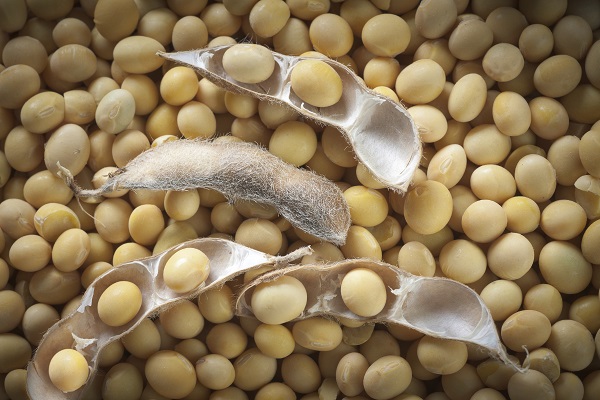
Soy sauce is a fermented soybean product that is indispensable in the nutrition of many countries of the world. With a deep reddish-brown and liquid-like appearance, it is used for enhancing the delicious taste and color of cuisines derived from various cultures. Soybeans, wheat and brine are the starting materials for the production of the seasoning agent. Soy Sauce is a product of a fermentation process involving the hydrolysis of soybean and wheat flour by various micro-organisms. It is a mixture of cooked soybean and wheat flour inoculated with Aspergillus enzyme, incubated at appropriate temperature for 3-5 days and then placed in a brine solution, whereupon an anaerobic fermentation takes place with the aid of halophilic yeasts and bacteria.
The global soy sauce market size was $40.63 billion in 2019 and is projected to reach $56.67 billion by 2027, exhibiting a CAGR of 7.63 per cent during the forecast period (2020-2027). At present, however, the global pandemic caused by the outbreak of COVID-19 has affected the purchasing patterns of soy sauce in the overseas market negatively.
According to the World Trade Organization, the global trade scenario was expected to fall between 13 per cent to 32 per cent in 2020. Nevertheless, the relentless effort by governments to improve their national economies in the post COVID 19 pandemic era is gradually leading to increase in international trade and consequently, trade in soy sauce. This shows the importance of the product in global cuisine.
Global trade is dominated by countries in the Asia-Pacific region, with China, Japan, Singapore, and Hong Kong among the major exporters. The largest manufacturers and retailers of soy sauce are based in the US and the Netherlands, both of which have become major exporter nations.
Speaking to Science Nigeria, the chief executive officer of Syntex Industries Limited, Tessy Nnaemeka, said the major raw material, soybean (Glycine max), is one of the most valuable, versatile, and most nutritionally important legumes globally, pointing out that it can be grown in a multitude of environments, using a variety of management practices, and, for diverse end-user purposes.
Available statistics show that in 2018, roughly 398 million tons of soybeans were produced worldwide. This accounted for 61 per cent of the overall global oilseed produced and 6 per cent of the world’s arable land use. The United States, Brazil, and Argentina produced approximately 81 per cent of the total global output, producing 34 per cent, 32 per cent, and 15 per cent of world’s soybeans output respectively. Soybean seed composition and its main components such as the meal and oil, are the driving forces behind the intensive cultivation of the crop production whose output has increased by nearly 350 per cent since 1987.
The nutritionist said soybean meal is intricately connected to the food supply of both humans and livestock owing to its natural properties such as a rich source of protein, carbs, and others.
According to the Food Climate Research Network (FCRN) at the University of Oxford, approximately 6 per cent of total soybean produced is utilized for human consumption every year. Soy oil provides great versatility with uses in the food and beverages, wax, construction, cosmetics, plastics, and fuel industries.
She pointed out that in Nigeria soybean is cultivated in nearly all the parts of the country with soybean production across Nigeria’s south, largely due to the efforts of the International Institute for Tropical Agriculture (IITA) and other international research institutes.
“Soybean yields have been increasing in recent years in the country, and the United States Department of Agriculture (USDA) attributed this to increasing private sector investment in soybean cultivation to meet the growing needs of local feed millers and poultry farmers. The USDA further reported that soybean production in year 2021-2022 in Nigeria is likely to be about 1.25 million tonnes, a 43 per cent increase from the most recent 2020-21 estimate. The area to be harvested is projected at 1.2 million hectares also, up by 20 per cent from the 2020-21 estimates,” she stated.
While also speaking to Science Nigeria, the director-general of the Raw Materials Research and Development Council (RMRDC), Prof. Hussiani Ibrahim, lamented that despite the high level of soybean production in the country, the production of soy sauce locally had not been encouraging.
He pointed out that in 2017, a total of 22,000 tonnes of doy sauce was consumed locally while local production was about 11,000 tonnes, culminating in expenditure of about $35m for soy sauce importation, adding in 2018 and 2019, consumption values increased to 28,000 and 30,000 tonnes respectively, while local production increased to 13,000 and 16,000 tonnes culminating in the expenditure of $58m and $62m in foreign exchange equivalent.
He highlighted that the major country where soy sauce was imported into the country during these periods was India and the major imported soy sauce products were dark soy sauce with HS code 21031000 and TEMPTIN soy sauce with HS Code of 21039020.
Ibrahim noted that in view of the increasing scarcity of foreign exchange in the country, coupled with the prohibitive cost of wheat flour, it was imperative to promote the production of soy sauce from locally available commodities.
The council, as a result, initiated a project with the primary purpose of promoting soy sauce production from locally available commodities such as soybean and tubers like cocoyam, sweet potato and cassava, as substitutes for wheat flour in the production of soy sauce, he said, adding this was expected to reduce the production cost, while at the same time establish a useful purpose for the lesser industrially utilized tubers.
“It was in this regard that RMRDC, in collaboration with a research team from the Lagos State University, assiduously carried out a research and development project that spanned about five years to substitute wheat with potato in the soy sauce production process. After the conclusion of the project, the team designed and fabricated a small-scale soy-sauce production plant to produce soy sauce from 100 per cent locally sourced raw materials. This has resulted in production of 100 per cent locally sourced flavour to meet the needs of the food industry. The process developed involved the utilization of Aspergillus enzyme to ferment a mixture of soybean and sweet potato extracts to produce the food flavour. The flavour was found to be very good and consumer-friendly and its commercialization has the inherent inbuilt capacity to reduce the importation of food flavours into the country,” he said.
The RMRDC boss said the design and fabrication of the plant had been completed and soy sauce samples produced analyzed by independent analysts. The samples, according to him, have properties reminiscent to soy sauce imported into the country
“Sensory evaluation shows it is widely accepted; however, the work is continuing to ensure and sustain the high level of acceptance of the product. In this regard, the council is already promoting investment in the commercial production of soy sauce in Nigeria, using the combination of the raw materials identified, the process and the production equipment developed.
“A feasibility study prepared indicated that the return on investment could be high. The cost of establishing the plant is low and it is within the definition of small and medium enterprises in Nigeria.
“The council presently has five investors that have indicated interest in the project and hoping that within the next few years, many plants producing soy sauce for local utilization and for export would be established in Nigeria. This is very important in view of the plans of the present administration to vigorously boost the economy in the post COVID- 19 pandemic era for the purposes of foreign exchange and employment generation and poverty reduction in the country,” he stated.
He added in order to achieve this, the council was seeking partnership with more willing investors to commercialize the project.


